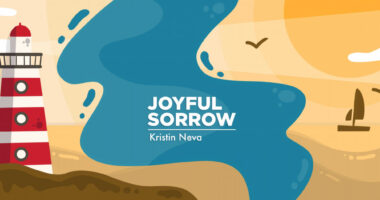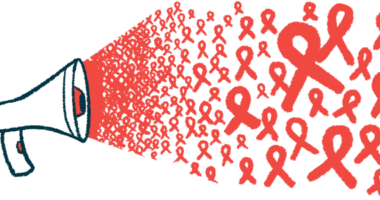My Pity Party Is Cancelled Indefinitely

“She put me through some changes, Lord, sort of like a Waring blender. Poor, poor, pitiful me. Poor, poor, pitiful me.” –Warren Zevon
***
The other day while I was ruminating about the burdens that ALS imposes, a call of nature provided an intervention of sorts. An urge to evacuate my bladder unexpectedly interrupted my self-pity party. As I reached for my tableside urinal, the inspiring, simple brilliance of its utility mesmerized me. A belated thanks to Delmas E. Collins who invented it in 1970, anticipating decades earlier my need today.
The urinal “eureka” moment led to a less self-absorbed perspective. Sure, I can lament my current circumstance. Many would acknowledge that I would be justified in doing so. However, the fact is that I live in the “friendliest” ALS era ever. I shudder to think of an existence generations or centuries before.
Imagine having ALS when it was not yet defined as a disease, much less understood. As the symptoms manifested in folks around you, and in you, one might consider demonic possession or retribution from God to be the cause. Perhaps contagion would be suspected. These conclusions could lead to societal ostracizing. As Patrick Corrigan asserts, “The lives of people with disease and disability are harmed not only by their conditions but by public response to these conditions in the form of stigma and discrimination.”
It wasn’t until the 19th century that ALS was isolated as a syndrome. Sir Charles Bell first recognized progressive muscular atrophy during the 1820s. Piggybacking on the work of Bell, Jean-Martin Charcot, in 1874, not only described the condition and its pathology but also named it “amyotrophic lateral sclerosis” (no muscle nourishment in the lateral area of the spinal cord, leading to motor neuron death) and separated it from other neurological conditions.
Unfortunately, in 1887, Charcot dramatically mischaracterized science’s grasp on ALS by remarking that, “The diagnosis as well as the anatomy and physiology of the condition amyotrophic lateral sclerosis is one of the most completely understood conditions in the realm of clinical neurology.”
As the early medical community floundered in its attempt to properly gauge the enormity of arresting ALS, those stricken were left adrift in turbulent waters, without both paddle and life preserver. In particular, when one could no longer self-ambulate or their diaphragm muscles began to compromise, the grim reaper likely would wet its chops. Then technology interceded.
In the 1950s, George Klein invented the first electric wheelchair. In 1956, they became commercially available.
The patient lift was patented in 1955 by R.R Stratton. In 1980, a patent was granted for a nonmanual lift, paving the way for even less labor-intensive transfers.
In 1987, continuous positive airway pressure (CPAP) was combined with a nasal mask, yielding what is now known as “modern” noninvasive mechanical ventilation. In 1992, the bilevel positive airway pressure ventilator (BiPAP), designed for the treatment of patients who could not tolerate the high pressures of CPAP, was introduced into the market. This made ventilation assistance possible for those who suffer from a neurological disorder that disturbs breathing.
It is highly likely that had I been born when my father was, the inability to rely on these relatively recently introduced care aides would have cut my post-diagnosis lifespan by greater than half. If I was of my grandfather’s vintage, it would have shrunk even more. Living today also affords me communication advantages, ranging from e-readers to electronic eye gaze communication options. Plus, I always have the aforementioned “pot to piss in” at the ready.
There is an odd dynamic in play for disability assistive equipment. Unless one is forced to avail oneself of enabling devices, the magic of the availability often goes unnoticed. In my case, too often I take that magic for granted. Shame on me.
***
“Let us keep looking in spite of everything. Let us keep searching. It is indeed the best method of finding, and perhaps thanks to our efforts, the verdict we will give such a patient tomorrow will not be the same we must give this patient today.” –Jean-Martin Charcot
***
Note: ALS News Today is strictly a news and information website about the disease. It does not provide medical advice, diagnosis, or treatment. This content is not intended to be a substitute for professional medical advice, diagnosis, or treatment. Always seek the advice of your physician or other qualified health provider with any questions you may have regarding a medical condition. Never disregard professional medical advice or delay in seeking it because of something you have read on this website. The opinions expressed in this column are not those of ALS News Today or its parent company, Bionews Services, and are intended to spark discussion about issues pertaining to ALS.








Diana Belland
I would like to receive ALS news via email.
Dave Reckonin
Rick, a great history lesson on those brilliant and productive inventors.
God's invention ? The disease of ALS itself.
Thanks a million, All-Loving God.
Don't call us we'll call you.
Paul Lyons
Rick,
Thanks for your insightful history lesson. I recently reached the same conclusion and am grateful I didn't get this horrendous disease 30 years ago.
Dave Reckonin
Thing is: What have we got now that we did not have 30 years ago?
Riluzole and Radicava.
For most pALS that's carpet-dust and slimy gloop respectively.
"Well, but we know so much more"
Yeah we now know that ALS is huge multiples more baffling than we thought 30 years ago.
Research is blindfolded dart-throwing. I hope they trip over something, because structured investigation is getting nowhere.
Amanda Ann Sifford
That was a great history lesson! I thought I had read and learned so much about ALS, but this article revealed so much more!
Diane
Have any of the commenters been checked for mercury toxicity? There's a recent article on this website about mercury, so please don't think I'm proposing anything unheard-of. There is no doubt that mercury causes neurological damage of various kinds. I like the mercury tri-test (blood/hair/urine) offered by Quicksilver Scientific. There's also a great documentary called "Evidence of Harm" which everyone should be aware of. I'm not sure if anyone else will see this comment, but I wish you well!
Rick Jobus
Diane, I had extreme levels of mercury, and underwent chelation.
Dave Reckonin
How did so much Mercury get into your body,Rick?
Did it happen before you were diagnosed?
Were your ALS symptoms better after chelation ?
I can't imagine I am the only person curious about this thing.
Diane
Also, I do appreciate the spirit of the author and the great article! Gratitude goes a long way toward many good things. :)
Fredro
Nice post!
Smedley
I didn't have any expectations concerning that title, but
the more I was amazed. The author did a great job.